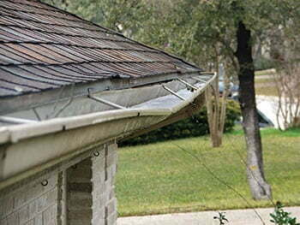Castle Rock Plumbing is the complex network of pipes, fixtures, and appliances that bring fresh water into buildings and remove wastewater. It is essential for everyday life, ensuring clean drinking water and hygienic bathroom and kitchen environments.

Plumbing professionals are key contributors to sustainable building design, implementing innovative water-saving technologies and promoting responsible water usage. They also help reduce health risks by preventing contaminated water and sewage backups.
Water supply systems deliver fresh, clean water to home faucets and appliances. They include pressurized pipes that transport water from a public water system or private well to appliances like showers and dishwashers. Each home plumbing system is different, but there are some basic components that all supply systems have in common. Understanding these key parts helps homeowners identify problems early and maintain a functional plumbing system.
Water enters homes through a main line connected to a public or community water system, private well, or other source. Once inside the house, the water runs through a series of pipes until it reaches each outlet point. In most homes, this is accomplished with a multi-point water supply system. The system consists of a water heater, hot and cold water lines, and the outlets themselves.
The water heater provides hot and cold water at a consistent pressure round the clock. It also provides a backup in case of city mains failure. This system is suitable when there are multiple outlet points on different floors of a building. In such cases, direct supply from the city mains is not possible due to limited pressure availability at higher elevations.
As part of the water supply, the main line supplies a pressure tank. The tank contains a reserve of water to ensure that the household has uninterrupted supply even in times of emergency. The tank is fitted with a water meter to monitor usage.
The plumber is responsible for installing the piping that connects the building to the water supply system. This includes the water service pipe and a specialized system that controls cross-connections. The piping materials used can affect water quality, pressure, and longevity.
Water service piping is usually made of copper or PEX. Each has its own set of pros and cons. Copper pipes are durable and provide good water pressure. They are prone to corrosion and clogging, however. PEX is less expensive and has a high resistance to corrosion and clogging. It is easy to install and a cost-effective option for retrofitting and new construction.
Wastewater Disposal
Wastewater is the liquid that flows out of household plumbing fixtures like toilets, showers, and sinks. It contains contaminants such as solids, oils, and chemicals that must be removed before the water can be safely returned to rivers, lakes, and oceans. The wastewater disposal process may take place via septic systems, underground sewer systems, or in a wastewater treatment plant.
Septic systems are used for treating and disposing of small volumes of domestic sewage onsite rather than sending it to a wastewater treatment plant. These systems are common in rural and suburban areas that aren’t serviced by centralized sewer systems. However, septic systems have the potential to contaminate groundwater and surface water supplies with nitrates, nutrients, pathogens, and other pollutants. In order to protect drinking water and natural resources, septic system operators must comply with state laws and regulations regarding the proper design, construction, operation, and maintenance of onsite wastewater treatment and disposal (OWTS) systems.
Once the wastewater reaches the plant, it undergoes preliminary and primary treatment to remove large items from the flow. The first step of preliminary treatment is screening, which consists of removing string-like materials, rags, and other large foreign objects that could damage or clog machinery. The next step is grit removal, which involves spraying the wastewater with bar screens to remove sand, gravel, egg shells, and other inorganic items that can wear away at pumps and other equipment.
The wastewater then goes through the primary treatment process where it is held in a basin to allow any heavy solids to settle to the bottom, forming sludge that will be disposed of later. During this stage, the wastewater is also clarified to separate out any remaining sludge and organic matter. The clear water that remains is then pumped to the secondary treatment process.
In the secondary treatment process, the dissolved organic matter in the wastewater is broken down by bacteria and other microorganisms. This process is aerobic, meaning it requires oxygen in order to operate properly. The water is sprayed or “trickled” over a plastic media where the aerobic microorganisms feed on the organic material in the wastewater.
Inspections
The plumbing industry is governed by a number of codes and regulations. Plumbers must adhere to these rules in order to work safely and efficiently. Failure to do so can lead to fines or even jail time. These codes ensure that plumbing systems are installed properly and that they meet local safety standards. They also help to avoid disasters such as bursting pipes or clogged drains.
Plumbing inspections are essential for any home or business owner. They can catch problems before they escalate, saving you money and preventing damage to your property. They can also identify hidden leaks, which are usually caused by worn pipe fittings or poorly fitted joints. In addition, plumbing inspections can save you money by reducing water waste.
Professional plumbing inspectors examine all aspects of a building’s plumbing system. This includes checking the location of each fixture, its material type, and any signs of corrosion or wear. They also look at the water pressure to make sure it is within the normal range. They may also use video inspections to get a closer look at drains and sewer lines.
Plumbers are required to read and follow all applicable codes and regulations when performing plumbing inspections. They must also keep up to date with changes in the industry. This is important because the codes and regulations are constantly being revised to reflect new technologies and safety procedures. Plumbers can stay up to date on the latest code changes by attending conferences and seminars, or by reading trade publications.
Another requirement for plumbers is to maintain a clean and safe work area. This is particularly important when working with chemicals, which can be dangerous if not handled properly. It is crucial for plumbers to wear protective equipment when handling these chemicals and to always read the safety instructions on the product label. They must also be careful when disposing of waste, as improper disposal can cause environmental and health hazards.
The plumbing system of a home or business is complex and requires proper installation and regular maintenance. Without it, you could face expensive repairs or even structural damage. That’s why it’s so important to have a plumbing inspection before you buy a house. In addition to ensuring the safety and functionality of the plumbing system, it can also save you thousands of dollars.
Regulations
As plumbing systems become increasingly complex, the need for rigorous standards and proper installation techniques has grown. Modern building codes deeply influence the industry by mandating safe materials, establishing design guidelines, and requiring key safeguards like backflow prevention valves. By following these guidelines, plumbers minimize the risk of leaks, contamination, and structural damage. In addition, standardized plumbing codes promote water conservation and efficiency, which can save homeowners significant amounts of money and reduce their environmental footprint.
Having an in-depth understanding of the national plumbing code is essential for professional plumbers to ensure compliance and quality work. Known as the Uniform Plumbing Code (UPC), this standard dictates the acceptable materials and methods for plumbing construction and installation. Plumbers who are familiar with the UPC can accurately assess a job site and provide expert advice to their clients.
State and local regulations also affect plumbing. While federal regulations set broad standards, each state may have its own requirements to address specific issues like water quality and waste management. For example, some states may require lead-free faucets and pipes, while others may limit the amount of sewage that can flow into a sewer system. Local regulations can also include provisions that help mitigate regional concerns, such as drought-friendly water usage in dry climates or seismic safety measures in earthquake zones.
Local regulations often apply to new construction and repairs, but they can also affect existing properties. For instance, a property owner may be required to replace noncompliant fixtures with water-efficient alternatives when they make major renovations or improvements that require a permit. This can reduce water waste and help prevent leaks, which can be hazardous to the health of building occupants.
Lastly, plumbing codes often regulate the sizing of pipe and fittings for water, waste, and venting systems. Proper sizing ensures that all liquid and solid waste is adequately evacuated from a building, protecting the health of its occupants. Inadequate sizing, on the other hand, can lead to health and safety hazards by exposing building occupants to sewage and harmful gases.








